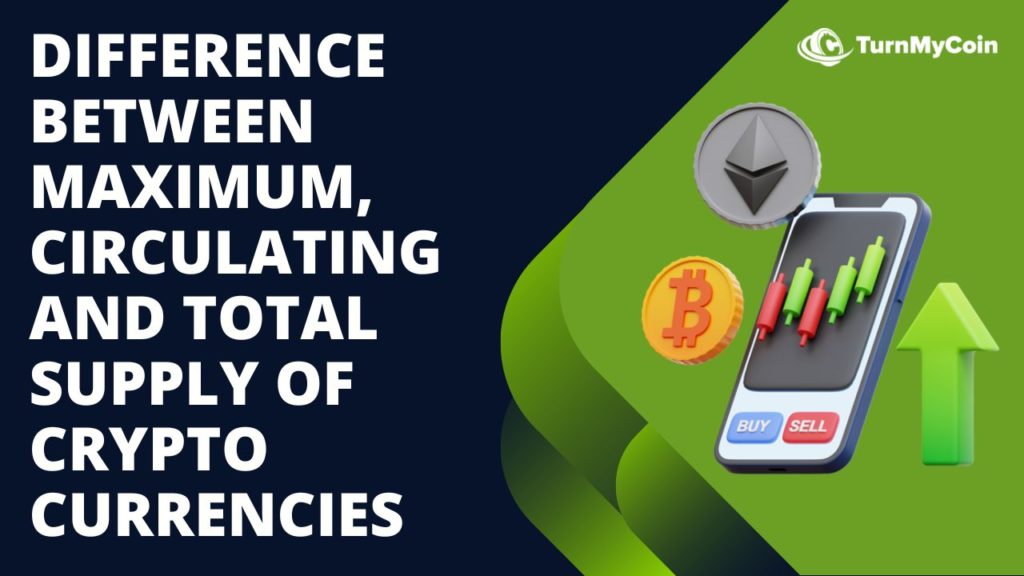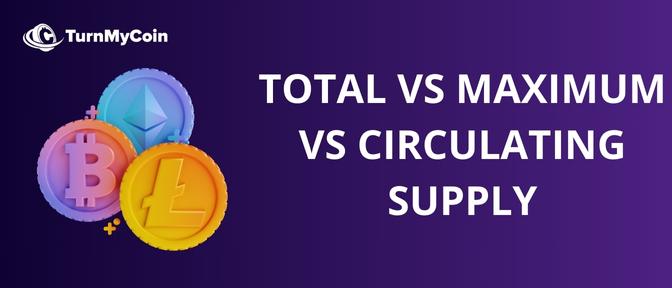Last updated on January 19th, 2024 at 06:46 am

Blockchain technology has revolutionised the way transactions and data are recorded . By introducing an authoritative and transparent system that is immune to tampering. The technology provides a secure ledger that can be trusted to maintain an accurate record of transactions and data . The maximum supply, also known as the total supply, refers to the upper limit of the number of units of a specific cryptocurrency that can exist. Makes it a popular choice for recording ownership of cryptocurrency units.
One of the key aspects of cryptocurrencies is their supply. Which determines various metrics such as demand, market capitalization, and overall worth. The precise number of coins in circulation at any given moment is a critical factor. It contributes to the value of a cryptocurrency. For example, the native cryptocurrency of the Bitcoin network, Bitcoin (BTC), is worth anything at all because you can trust the blockchain technology to provide an accurate and up-to-date record of how many coins are in circulation. Understanding the supply of a cryptocurrency is essential in determining its overall value and potential as an investment.
Table of Contents
What is crypto token supply?
The crypto token supply refers to the total number of units of a specific cryptocurrency that are currently in circulation. These tokens are created and distributed through various processes, including mining, staking, and initial coin offerings (ICOs). The supply of a crypto token is a crucial factor in determining its overall value and market capitalization.

The supply of a crypto token can be influenced by various factors. Such as including the underlying technology. The adoption rate of the cryptocurrency, and the overall demand for the token in the market. For example, if a cryptocurrency has a limited supply, it will become more valuable as demand increases. As there is a finite number of tokens available. On the other hand, if the supply of a crypto token is not limited. The token’s value may be more volatile and subject to market forces.
What is a circulating supply?
The circulating supply refers to the number of units of a specific cryptocurrency that are currently in circulation and available for use. It is a crucial factor in determining the overall market capitalization and value of a cryptocurrency. The circulating supply represents the portion of the total supply of a cryptocurrency that has been released into the market and is available for trading and transactions.

It can be affected by various factors, including the methods used for token distribution, such as mining, staking, and initial coin offerings (ICOs).
The circulating supply can also be influenced by the number of tokens that are locked up or reserved for specific purposes. Such as future developments, partnerships, or employee compensation. It is important to note that the circulating supply is not always the same as the total supply of a cryptocurrency.
Some cryptocurrencies have a finite supply, meaning that there will be a limit to the number of tokens that will be created and released into the market. On the other hand, some cryptocurrencies have an unlimited supply. Which means that new tokens can be created and released into circulation as demand dictates.
What is the maximum supply?
The maximum supply, also known as the total supply, refers to the upper limit of the number of units of a specific cryptocurrency that can exist. This limit is determined by the underlying technology and design of the cryptocurrency, and can be either finite or infinite. For cryptocurrencies with a finite maximum supply. There is a predetermined limit to the number of tokens that will be created and released into circulation. Once this limit has been reached, no further tokens can be created.

For example, the maximum supply of Bitcoin is 21 million, meaning that once all 21 million Bitcoins have been mined, no more Bitcoins can be created. For cryptocurrencies with an infinite maximum supply, there is no predetermined limit to the number of tokens that can be created. The supply of these cryptocurrencies can increase or decrease depending on market demand and other factors.
The maximum supply is a crucial factor in determining the overall value and potential for growth of a cryptocurrency. For cryptocurrencies with a finite maximum supply, a limited supply can increase the value of the token as demand increases. On the other hand, for cryptocurrencies with an unlimited supply, the potential for inflation can impact the overall value of the token.
What is a total supply?
“Let’s talk about the total supply of a cryptocurrency. It’s simply the grand total of all units that exist and are available for use, including those that are currently in circulation and those that are set aside for specific reasons. This number represents the absolute limit of units that can exist for a given cryptocurrency, determined by its technology and design. And here’s the thing: the total supply can either be limited or limitless, depending on the particular cryptocurrency in question..

For cryptocurrencies with a finite total supply. There is a predetermined limit to the number of tokens that can exist, and once this limit has been reached, no further tokens can be created. For cryptocurrencies with an infinite total supply, there is no limit to the number of tokens that can be created, and the total supply can increase or decrease based on market demand and other factors.
The total supply is a crucial factor in determining the overall value and potential for growth of a cryptocurrency. For cryptocurrencies with a finite total supply, a limited supply can increase the value of the token as demand increases. On the other hand, for cryptocurrencies with an unlimited total supply, the potential for inflation can impact the overall value of the token.
Total supply vs. maximum and circulating supply

The total supply, maximum supply, and circulating supply are all related but distinct concepts in the world of cryptocurrency. The total supply refers to the overall number of units of a specific cryptocurrency that have been created and are in circulation. It includes both the circulating supply and any units that are locked up or reserved for specific purposes. The maximum supply represents the upper limit of the number of units of a specific cryptocurrency that can exist. It can be either finite or infinite, determined by the underlying technology and design of the cryptocurrency.
The circulating supply, in turn, refers to the number of units of a specific cryptocurrency that are currently in circulation and available for use. It is the portion of the total supply that has been released into the market and is available for trading and transactions. The three concepts are interrelated and can impact the overall value and potential for growth of a cryptocurrency. For example, a finite maximum supply can increase the value of a cryptocurrency as demand increases, while a high circulating supply can indicate a large market capitalization and potential for stability.
How Does Circulating Supply Affect Cryptocurrency Price?
Circulating supply is a key factor that can impact the price of a cryptocurrency. The circulating supply represents the number of units of a specific cryptocurrency that are currently in circulation and available for use. This includes the tokens that are traded in the market, used for transactions, and held by individuals or entities. A higher circulating supply can lead to lower prices per token. As there is a larger number of tokens available for trade and transactions.
When the demand for a cryptocurrency remains constant and the circulating supply increases, the price per token may decrease. This is because a larger supply of tokens in the market. It can result in a higher level of competition for buyers, and therefore lower prices. On the other hand, a lower circulating supply can lead to higher prices per token. As there are fewer tokens available for trade and transactions. When demand for a cryptocurrency increases and the circulating supply remains constant . The price per token may increase, as buyers compete for a limited number of tokens.
What Happens When Circulating Supply Reaches Max Supply?
The effect of circulating supply reaching the maximum supply depends on the design of the underlying cryptocurrency and whether the maximum supply is finite or infinite.
For cryptocurrencies with a finite maximum supply, reaching the maximum supply means that no further tokens can be created. This can have a significant impact on the price of the cryptocurrency, as the supply-demand dynamic can be altered. When demand for the token remains constant or increases while the supply remains the same. The price per token may increase due to the limited number of tokens available. This can also result in a more stable market. As the token’s value is based on a known and limited supply.
For cryptocurrencies with an infinite maximum supply. Reaching the maximum supply does not mean that no further tokens can be created. In this case, the maximum supply acts as a theoretical upper limit. But the actual number of tokens in circulation can continue to increase. The impact of reaching the maximum supply in this case will depend on other factors. Like wise market demand, adoption, and competition from other cryptocurrencies.